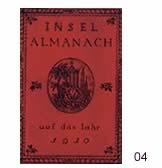|
The Almanac
 OXFORD
ALMANACK 1674 OXFORD
ALMANACK 1674
A table of astronomic events with predictions for the coming year.
They were mass printed and can be seen as part of popular art. At
the beginning of the Twentieth Century individual publishers used
the term more to describe a publisher's miscellany of literary texts
bound together and presented to customers at the beginning of the
year.
 PUNCH ALMANACKS
PUNCH ALMANACKS
 CRUIKSHANK COMIC ALMANACKS
CRUIKSHANK COMIC ALMANACKS
 MARGARET
BRYAN, A Children's Almanac 1947 MARGARET
BRYAN, A Children's Almanac 1947
 anonymous print attacking Patrick Murphy's weather almanacs 1838 anonymous print attacking Patrick Murphy's weather almanacs 1838
 IN THE PUBLIC DOMAIN IN THE PUBLIC DOMAIN
01. Almanac
Cuts from the Boston Type and Stereotype Foundry Catalog (1832)
published by Dover Books NY 1989, edited by Stephen Saxe. The cuts present
modern narrative glosses upon the signs of the Zodiac.
02, 06, 07, 08 HOLLAND
; a Dutch Catholic Almanac, SUNRISE Utrecht 1940, and
a most bizarre combination of image and text. Here are the covers, symbolising
the passing of the year through its seasons.The covers measures 21 x
33cms.
03. Almanac in a
single sheet, The Almanac for 1837 ,published by the
Pellerin Company in Epinal ("L'Image d'Epinal").
04. GERMANY Insel
Verlag Almanacs. Every year the German publishing firm of
Insel Verlag issued an Almanac which, although conforming to the standard
pattern of almanach, is more like a sort of literary miscellany with
corporate references. They were very beautifully designed, these perhaps
by Peter Behrens.
05. Punch
Almanac for 1949, November 1st, drawing by BROCKBANK, 17 x
24 cms
09. Almanac for 1841 , a heady mixture of astronomic
and astrologic lore. 11 x 18cms
10. The Oxford Almanac, one of a series of broadsides
commissioned from the Oxford University Press who held the national
monopoly on publishing almanacs. This engraving is by Michael Burghers
who was eventually succeeded by a sequence of brilliant men, Basire,
Vertue and the Rookers and James Basire who turned the imagery from
the emblematic to the topographic.
|













































